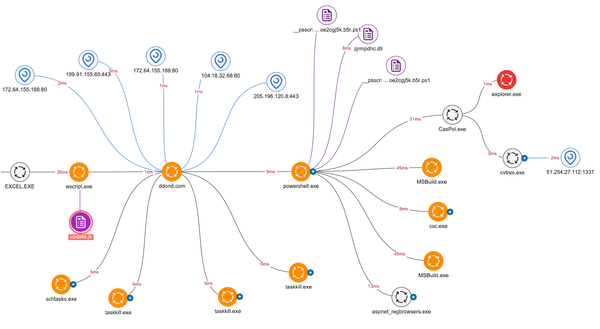Advanced Cloud API Exploitation Techniques for Educational Purposes

Disclaimer
This article is intended solely for educational purposes. The techniques described here should only be tested in controlled, authorized environments. Unauthorized use of these methods is illegal and unethical. Always follow legal and ethical guidelines when conducting security testing.
Advanced Cloud API Exploitation Techniques: Educational Purposes Only
Cloud APIs are at the core of modern infrastructures, enabling automation, integration, and communication between various services. As cloud adoption grows, so does the risk of API misconfigurations, making them a prime target for attackers. Understanding how these misconfigurations are exploited can help cybersecurity professionals design more robust defenses.
In this article, we explore advanced techniques for exploiting cloud API vulnerabilities, from privilege escalation to data exfiltration, while emphasizing the importance of conducting such tests only in authorized environments.
Why API Misconfigurations Are Dangerous
APIs facilitate seamless interactions within cloud environments, but their complexity and widespread use make them prone to security misconfigurations. Attackers can exploit these flaws to:
- Elevate privileges from user-level to admin-level access
- Exfiltrate sensitive data from cloud storage
- Compromise cloud resources to execute malicious actions
- Move laterally within multi-cloud infrastructures
One of the primary reasons APIs are vulnerable is due to misconfigured Identity and Access Management (IAM) roles and inadequate token management. Attackers exploit weak configurations to manipulate API calls, bypass authentication, and gain unauthorized access.
Technique 1: Privilege Escalation via Compromised API Tokens
Keyword: Privilege Escalation via API Tokens
API tokens are frequently used for authentication and often stored in environment variables or configuration files. Attackers can obtain these tokens through misconfigured cloud instances, code leaks, or social engineering.
Once in possession of a token, attackers can escalate privileges by leveraging API calls to assume roles with higher permissions. For instance, in AWS environments, they might use the AssumeRole API to gain administrative access:
aws sts assume-role --role-arn arn:aws:iam::123456789012:role/AdminRole --role-session-name exploit-session
This simple command allows attackers to impersonate a privileged user, granting access to sensitive cloud resources.
Mitigation:
- Enforce short-lived API tokens and rotate them frequently.
- Implement strict role-based access control (RBAC) to minimize privilege escalation risks.
- Monitor and audit API call logs for unusual activity.
Technique 2: Data Exfiltration via Open Endpoints
Keyword: Data Exfiltration through Cloud APIs
Misconfigured APIs often expose sensitive data without proper authentication. Attackers scan for endpoints that lack authorization controls or have public accessibility.
For example, an open S3 bucket in AWS might expose customer data, while a misconfigured API endpoint in Azure could leak internal system information. Attackers often use automated tools like Burp Suite and AWS CLI to find vulnerable endpoints:
aws s3 lss3://public-bucket-name
In multi-cloud environments, attackers often combine exposed endpoints from Google Cloud, Azure, and AWS to maximize data exfiltration.
Mitigation:
- Enforce API authentication and token validation on all endpoints.
- Use automated vulnerability scanners to identify open and unsecured endpoints.
- Implement data encryption both at rest and in transit to minimize data exposure.
Technique 3: API Injection Attacks
Keyword: API Injection Attacks
APIs that do not properly validate input are susceptible to SQL injection and command injection attacks. Attackers exploit this by sending crafted API requests that include malicious payloads.
In the context of SQL injection, an attacker might target a vulnerable endpoint that retrieves user data:
GET /api/user?id=1' OR '1'='1
In command injection scenarios, attackers might exploit endpoints that execute system commands:
curl -X POST https://api.target.com/exec -d "cmd=ping;rm -rf /"
Successful exploitation could lead to data manipulation, system compromise, or remote code execution (RCE).
Mitigation:
- Implement input validation and sanitization on all API endpoints.
- Utilize web application firewalls (WAF) to block malicious payloads.
- Conduct regular penetration testing to detect injection vulnerabilities.
Technique 4: Abuse of Cloud-Specific Features
Keyword: Cloud-Specific API Abuse
Many cloud providers offer unique features through APIs that, when misconfigured, can be abused. Attackers might exploit cloud-native services to create backdoors or manipulate resources.
For instance, AWS Lambda functions with excessive permissions might allow attackers to execute arbitrary scripts, while Azure Functions could be exploited to run persistent backdoors. Attackers can use cloud command-line interfaces to list and execute vulnerable functions:
aws lambda list-functions
aws lambda invoke --function-name vulnerableFunction
Mitigation:
- Apply the principle of least privilege when assigning function roles.
- Regularly audit function configurations to detect excessive permissions.
- Monitor function invocation logs for anomalies.
Detecting and Preventing API Exploits
To minimize the risk of cloud API exploitation, implement the following best practices:
- Enable multi-factor authentication (MFA) for all API access.
- Deploy real-time monitoring and integrate it with SIEM solutions to detect anomalies.
- Enforce secure coding practices and train developers on API security.
- Automate security testing to identify and remediate misconfigurations before they are exploited.
Conclusion
Cloud API misconfigurations continue to pose significant risks to modern infrastructures. Attackers are constantly developing new techniques to exploit insecure endpoints, privilege escalations, and data exfiltration opportunities. By understanding how these attacks are executed and proactively mitigating them, cybersecurity professionals can reduce the risk of compromise.
Again, remember that these techniques are shared purely for educational purposes and should never be used in unauthorized environments. Responsible and ethical testing practices are paramount to maintaining secure cloud systems.




